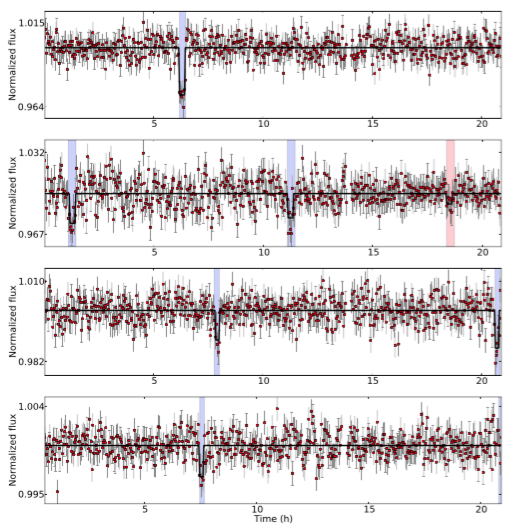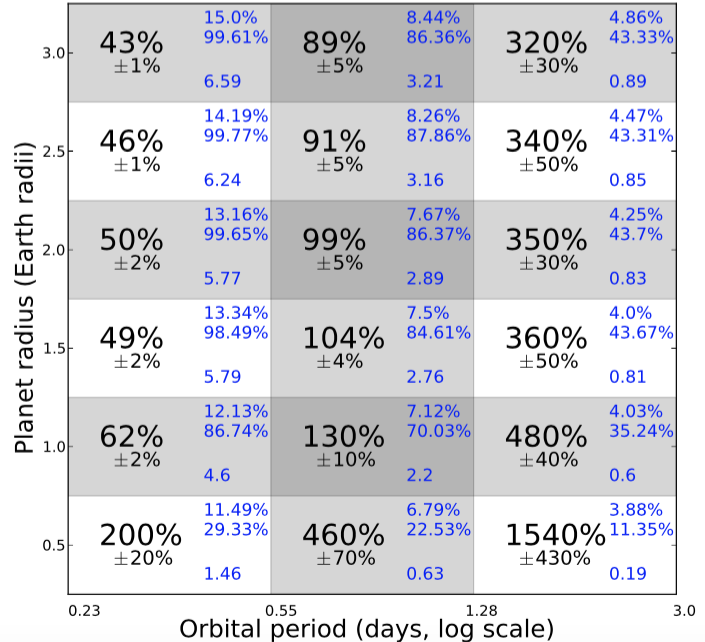Occurrence rates of planets around brown dwarfs
I was fortunate enough to work under the supervision of Dr. Amaury Triaud for my first experience in research, with additional support from Prof. Yanqin Wu. With my interest in exoplanets piqued from a project in a third year lab course in which I was taught differential photometry and recovered a transiting exoplanet light curve from a set of raw images, I asked Amaury for a similar project and was delighted to have his full support and guidance (this project eventually culminated in my first, 1st-author paper)! The project started off with the goal of trying to detect exoplanet transits from a Spitzer raw dataset of light curves of 44 brown dwarf stars. Although we found no convincing candidates in the data, I was able to compute upper limits on the occurrence rates of short-period planets orbiting brown dwarfs by simulating insertion-and-retrieval tests of synthetic transits. While our results are not extremely constraining, this type of analysis is the first of its kind for brown dwarfs!
The details of this work can be found in our published paper, He, Triaud, & Gillon (2016).

Figure 3 left panel in He, Triaud, & Gillon (2016). Examples of our insertion-retrieval tests for our simulated transits in real data.

Figure 8 in He, Triaud, & Gillon (2016). The numbers in black are the upper limits of the planet occurrence rates for each radius-period bin. The numbers in blue (from top to bottom in each bin) list the transit probability, the detection probability given a transit, and the expected number of detections in our sample of 44 brown dwarfs if we assume an occurrence rate of 100%.